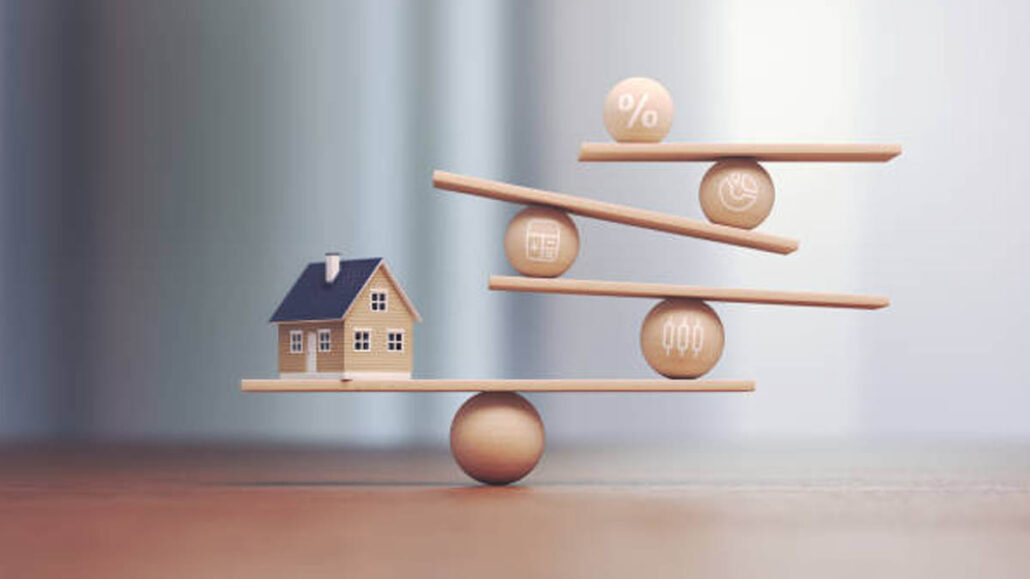Understanding how mortgage interest works isn’t just a lesson in numbers—it’s a key step to mastering one of life’s biggest financial commitments. Whether you’re buying your first home or refinancing a property, knowing how interest functions over time can save you tens of thousands of dollars.

What Is Mortgage Interest and Why It Matters
Mortgage interest is the cost you incur for borrowing money to buy a home. When a lender gives you a mortgage, they’re not just helping you—they’re also running a business. Your interest payments are their profit and your obligation. Unlike rent, which is a flat fee, mortgage interest is tied to the size of your loan and the time it takes to repay it.
Your mortgage payment isn’t just about paying back what you borrowed (the principal). It’s also about covering the lender’s fee (the interest), which is why your total cost often ends up much higher than your initial loan.
The Core Components of a Mortgage Payment
Let’s break down the classic PITI structure:
- Principal: The original loan amount.
- Interest: The lender’s charge for borrowing.
- Taxes: Local property taxes added to your bill.
- Insurance: Homeowners insurance, and sometimes private mortgage insurance (PMI).
The biggest chunk in the early years? You guessed it—interest.
Fixed vs. Adjustable Interest Rates
- Fixed Rate Mortgage: Predictable and stable. Your interest never changes, regardless of market trends. It’s ideal if you plan to stay long-term.
- Adjustable Rate Mortgage (ARM): Starts with a lower rate but may rise over time based on market indices. Great for short-term homeowners or those expecting income increases.
Amortization: How Interest Changes Over Time
Amortization is how your loan balance is reduced over time. With most loans, your early payments are mostly interest. As months pass, more of your payment goes to the principal. This shifting dynamic means early overpayments reduce your total interest significantly.
For example, a $300,000 mortgage at 6% over 30 years may result in over $347,000 paid in interest alone!
How Lenders Calculate Mortgage Interest
Interest is calculated daily but paid monthly. The basic formula for monthly interest is:
- (Annual Interest Rate ÷ 12) × Remaining Principal
This means your payment size doesn’t change, but what it covers (interest vs. principal) shifts monthly.
APR vs. Interest Rate: What’s the Difference?
- Interest Rate: Purely the cost of borrowing.
- Annual Percentage Rate (APR): Interest plus fees, points, and other costs.
APR is more comprehensive and a better comparison tool when shopping lenders.
What Affects Your Mortgage Interest Rate?
- Credit Score: Higher scores = lower risk = better rates.
- Loan Amount: Bigger loans may get different pricing.
- Loan-to-Value Ratio (LTV): Smaller down payments increase LTV and often raise interest.
- Market Trends: The Federal Reserve’s decisions, inflation, and the broader economy all affect rates.
The Role of Amortization Schedules
This document outlines your entire payment timeline. It tells you what portion of each payment goes toward interest and principal every single month. Understanding it can help you make smarter overpayments.
Extra Payments and Their Huge Impact
Want to kill that interest? Make extra principal payments. Here’s how:
- Pay half your mortgage biweekly instead of monthly (you’ll make one extra payment yearly).
- Round up payments to the nearest hundred.
- Apply bonuses or tax returns to principal.
Rate Locks: What They Are and How They Work
A rate lock guarantees your interest rate for a certain period (often 30-60 days). Locking protects you from rate hikes while you’re closing the loan. But if rates fall, you’re stuck unless your lender offers a “float down” option.
Should You Buy Mortgage Points?
Points are upfront fees you pay to get a lower rate. One point typically costs 1% of your loan and reduces your rate by 0.25%. This is smart if:
- You plan to stay in your home long term.
- The savings from a lower rate exceed the upfront cost over time.
Loan Term: 15 vs. 30 Years
- 15-Year Loan: Lower interest rate, higher monthly payment, huge interest savings.
- 30-Year Loan: More affordable monthly, but total interest is significantly higher.
Government-Backed Loans and Their Interest Nuances
Government-insured loans like FHA, VA, and USDA often have different interest dynamics:
- FHA Loans: Offer competitive interest rates but require mortgage insurance.
- VA Loans: Available to veterans, usually with lower interest and no down payment.
- USDA Loans: Designed for rural buyers, also with low interest and favorable terms.
These programs often offer reduced interest risk for lenders, which translates into better deals for borrowers.
Refinancing: The Key to Better Interest Rates
If rates drop or your financial situation improves, refinancing could lower your mortgage interest. It involves replacing your current loan with a new one—ideally at a lower rate.
Best times to refinance:
- When interest rates drop at least 1%
- When your credit score improves
- When your home’s equity increases
- Watch out for closing costs, which can offset your savings if you’re not careful.
Is Mortgage Interest Tax Deductible?
Yes, for many homeowners, mortgage interest is tax-deductible. As of recent tax reforms:
- Only interest on the first $750,000 of a loan is deductible (for homes purchased after 2017).
- Must itemize deductions to benefit.
This deduction can result in significant savings, especially in the early years of your loan when interest makes up most of your payment.
Choosing Between Loan Types Based on Interest
- Going fixed? Opt for stability.
- Going ARM? Make sure you understand caps and potential rate hikes.
- Considering interest-only? Know that you’re delaying principal payments, not avoiding them.
Make decisions based on your income, future plans, and tolerance for financial surprises.
Adjustable Rate Mortgage (ARM) Mechanics
ARMs typically feature:
- An initial fixed-rate period (e.g., 5 years)
- Adjustment intervals (e.g., annually after the fixed period)
- Caps on rate changes per period and over the loan’s life
Always ask for worst-case scenarios when considering an ARM.
Mortgage Interest and First-Time Buyers
If you’re new to homeownership:
- Learn how mortgage interest works before house hunting.
- Use calculators to project full loan costs.
- Apply for pre-approval to get accurate rate estimates.
You may also qualify for first-time homebuyer assistance programs with favorable interest rates.
Private Mortgage Insurance (PMI) and Interest Impact
If your down payment is below 20%, you’ll likely need PMI. While PMI isn’t interest, it’s an added monthly cost. However, a higher LTV also pushes up your interest rate, creating a double whammy.
To avoid it:
- Put 20% down
- Refinance when your equity exceeds 20%
Mortgage Insurance vs. Mortgage Interest
Mortgage insurance protects the lender.
Also mortgage interest is the cost you pay to borrow.
While they both add to your monthly costs, only mortgage interest is potentially tax-deductible.
Loan-to-Value (LTV) and Interest Rates
The LTV ratio is your loan amount divided by the home’s value. The lower your LTV:
- The less risky you seem to lenders
- The lower your mortgage interest rate
Boost LTV with a bigger down payment or by purchasing a less expensive home.
Negotiating Lower Interest Rates
Lenders often have flexibility. Here’s how to negotiate:
- Shop multiple offers and use them as leverage.
- Ask about discount points.
- Improve your credit before applying.
- You can also hire a mortgage broker to negotiate for you.
Online Tools for Mortgage Interest Calculation
Before signing any dotted lines, run the numbers using:
- Bankrate Mortgage Calculator
- NerdWallet’s APR tool
- Excel amortization templates
Seeing the total interest you’ll pay can be a wake-up call—and a motivator to save.
U.S. Mortgage Interest Rates vs. Global Trends
Compared globally, U.S. mortgage interest rates are:
- Typically lower than emerging markets
- Often higher than countries with negative interest rate policies (like Japan)
This makes U.S. mortgages attractive for global investors—and vital for U.S. homebuyers to monitor.
How the Economy Affects Mortgage Rates
- During recessions: Interest rates often drop to stimulate buying.
- During economic booms: Rates rise to slow inflation.
Knowing these trends helps you time your homebuying or refinancing for the best deal.
Strategies for Long-Term Interest Savings
- Make biweekly payments
- Refinance smartly (when rates drop or credit improves)
- Consider shorter loan terms
- Avoid interest-only and balloon loans unless well-planned
- Stay informed about rate movements
A little planning can save you tens of thousands over the life of your mortgage.
Frequently Asked Questions (FAQs)
What is the difference between the interest rate and the APR?
The interest rate is the stated annual rate charged on the loan. The APR includes the interest rate plus other costs associated with the loan, such as origination fees and discount points, providing a more comprehensive measure of the cost of borrowing.
How do extra mortgage payments save me money on interest?
Extra payments directly reduce your principal balance. Since interest is calculated on the outstanding principal, a lower principal balance means you accrue less interest over the remaining life of the loan. Additionally, reducing the principal faster can shorten your loan term, further decreasing the total interest paid.
Is it better to get a fixed-rate or an adjustable-rate mortgage?
The best option depends on your individual circumstances, financial goals, and risk tolerance. Fixed-rate mortgages offer stability and predictability, while ARMs may offer lower initial rates but come with the risk of rate increases. Consider how long you plan to stay in the home and your comfort level with fluctuating payments.
How often do mortgage interest rates change?
Mortgage interest rates can fluctuate daily based on various economic factors and market conditions.
Can I deduct mortgage interest on my taxes?
In some jurisdictions, you may be able to deduct the interest you pay on your mortgage, subject to certain limitations. Consult a tax professional for specific advice.
Conclusion
To wrap it all up: How mortgage interest works isn’t just math—it’s about strategy. Your choices on rate type, loan term, credit habits, and even the economy’s behavior all shape how much interest you’ll pay. With the right knowledge and timing, you can slash your interest costs and build equity faster.

